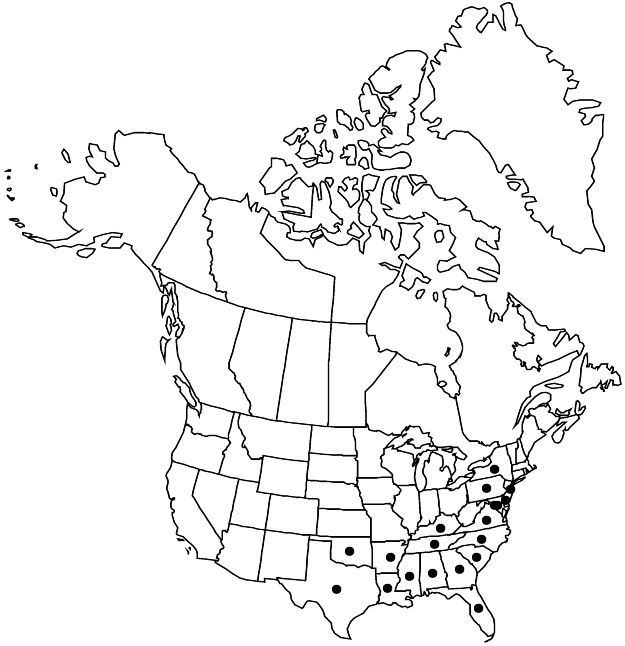Hypericum crux-andreae
Inst. Rei Herb. 2: 520. 1766.
Shrubs, usually erect to suberect, rarely decumbent and rooting, usually unbranched, rarely sparsely branched distally, 1–13.5 dm. Stems: internodes 2–4-lined at first, then 2-winged. Leaf-blades usually oblong to elliptic, rarely obovate to oblanceolate or triangular-ovate, 12–36 × 6–16 mm, base articulated, rounded to slightly cordate-amplexicaul, without glandlike auricles, margins plane to subrecurved, apex rounded to obtuse, midrib with to 3 pairs of branches. Inflorescences ± narrowly cylindric to narrowly pyramidal, 1–3 (–7) -flowered, branching dichasial, from to 4 proximal nodes. Flowers 20–30 mm diam.; sepals persistent, enclosing capsule, 4, unequal, outer broadly ovate to circular, 9–20 × 9–18 mm, apex apiculate or obtuse to rounded, inner narrowly elliptic to lanceolate, 7–14 × 2–4 mm, apex acute to subacute; petals 4, bright-yellow, obovate, 11–18 mm; stamens persistent, 80–100; ovary 3 (–4) -merous. Capsules narrowly ellipsoid-ovoid, 7–10 × 5–6.5 mm. Seeds not carinate, 0.8 mm; testa shallowly scalariform. 2n = 18.
Phenology: Flowering summer–fall.
Habitat: Moist to dry, pine savannas and flatwoods, meadows, bogs, other wet habitats, lake and pond margins
Elevation: 0–1500 m
Distribution

Ala., Ark., Del., D.C., Fla., Ga., Ky., La., Md., Miss., N.J., N.Y., N.C., Okla., Pa., S.C., Tenn., Tex., Va.
Discussion
Hypericum crux-andreae, long known as Ascyrum stans, is a derivative of H. frondosum in which the tetramerous tendency in the perianth has become fixed. The low, multistemmed form with cuneate leaves, longer-
pedicellate flowers, and shorter sepals (A. cuneifolium, A. stans var. obovatum) cannot be separated from typical H. crux-andreae.
Linnaeus included “Hypericum ex terra mariana, floribus exiguis luteis” under his phrase name for Ascyrum crux-andreae; that element of the protologue refers to H. mutilum Linnaeus; see N. K. B. Robson (1980).
Selected References
None.
